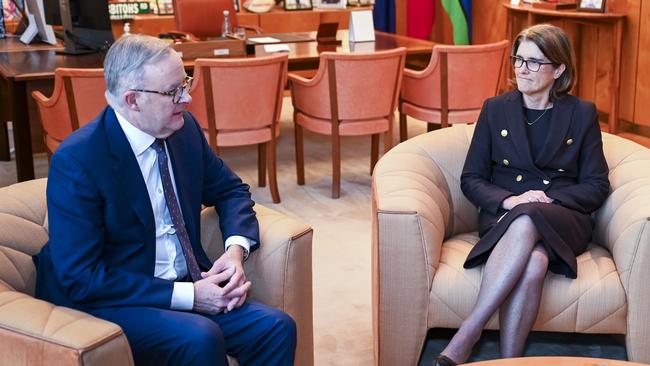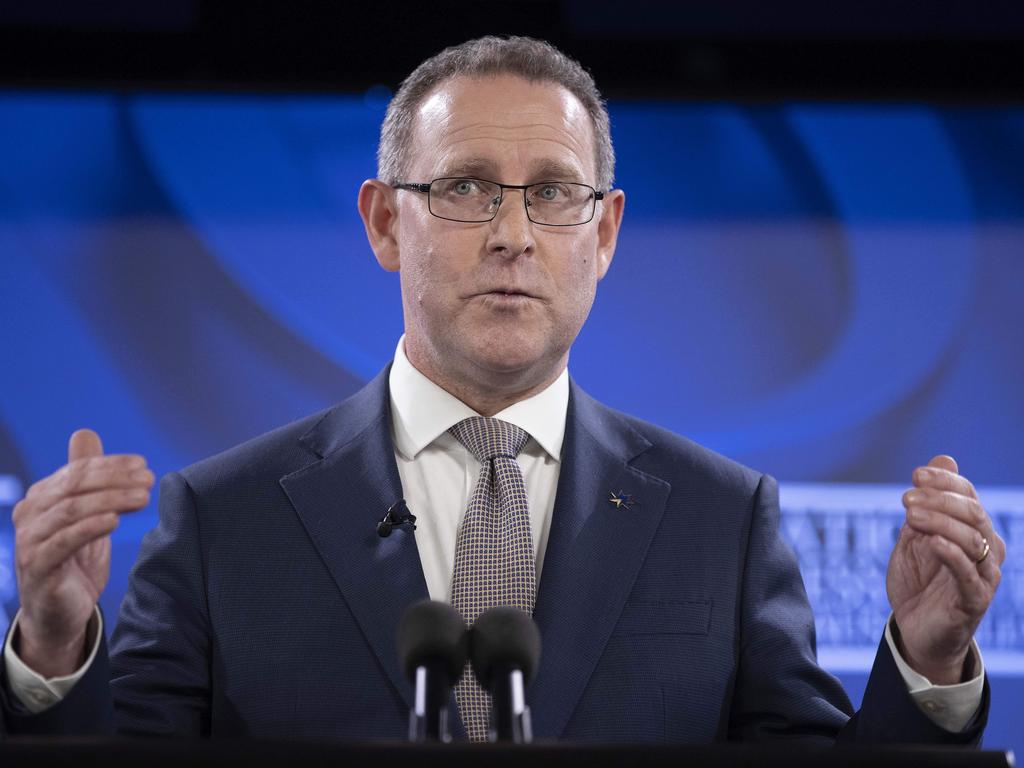RBA inflation fight pushing middle-class families into financial hardship for the first time
The squeeze on family budgets from the crusade against inflation is pushing more Australians into financial hardship for the first time.

The brutal squeeze on family budgets from the Reserve Bank’s monetary crusade against inflation is pushing more Australians into financial hardship for the first time, with official data showing consumers are running down savings built up over the pandemic to pay their loans and bills.
Ahead of Tuesday’s RBA board meeting, the first to be chaired by Michele Bullock, new documents from the central bank also show a growing number of Australians are using credit cards to cover the rising cost of rents, petrol, electricity, gas and insurance.
New figures from the RBA on Friday showed the stock of personal credit has jumped by 1.6 per cent in the five months to August.
Central bank officials are also worried about international developments, such as rising oil prices and bond yields, mixed signals in the local economy, and the long lags in evidence about financial distress in the wake of a spike in crisis requests to financial counsellors. But Ms Bullock and the board are expected to hold rates steady on Tuesday, giving relief to millions of homeowners and businesses.
RBA documents about mortgage stress released under freedom of information reveal the National Debt Helpline is receiving an increasing volume of calls from people who have never experienced financial hardship nor drawn on social services.
Following a meeting with the NDH, an internal RBA email in July said the agency “reported a significant number of callers experiencing hardship who are accruing additional debts via credit cards, Buy Now Pay Later, borrowing from friends and family, and increasingly unpaid obligations to the ATO, their utilities providers and council rates”.
As well, representatives from the helpline told RBA assistant governor Brad Jones that underinsurance of homes, cars and personal belongings was an increasing problem, while other borrowers were “asking about how they could qualify to tap into their superannuation balances”.
“All of this meant that there was a long lag between households making significant adjustments to their personal finances as they become more stressed (especially if they had managed to ‘roll over’ a hardship arrangement for up to 12 months), and falling into arrears as reported in the official data,” said the email from the unidentified RBA financial stability official.
“One takeaway from this discussion was that we need to be reviewing a wider range of ‘leading edge’ data to better understand how arrears and non-performing loans (and household consumption) could evolve in the period ahead.”
Commonwealth Bank economist Stephen Wu said the recent lift in personal finance extended to households other than for housing could be suggesting some are increasingly relying on credit cards “to cope with rising cost of living pressures”.
According to the Australian Bureau of Statistics, the value of household deposit accounts decreased by $6bn in the June quarter, the first decline in 16 years.
The RBA will this week publish the six-monthly financial stability review, which will provide an update on the level of financial stress and pressure on household budgets from its dozen interest rate hikes, which began in May last year.
Although the RBA’s policy rate is lower than in peer countries, the squeeze on family cash flow is more pronounced in Australia because of the higher share of variable-rate mortgages and shorter maturity of fixed-rate loans.
According to minutes from the central bank’s meeting last month, “scheduled mortgage payments rose to 9.7 per cent of household disposable income in July, a little above the estimated previous historical high”.
“Members noted that aggregate payments were set to increase further as more borrowers with fixed-rate loans roll off onto higher rates,” the minutes said.
Much of the key local data on prices growth, consumer spending and the labour market the central bank is relying on to gauge the success of its monetary tightening are falling into place.
According to the Australian Bureau of Statistics, the 1.3 per cent annual trend rate of growth in retail turnover recorded in August is the lowest in the history of the series
“Considering how high inflation and strong population growth have added to retail turnover in the past year, the historically low trend growth highlights just how much consumers have pulled back in response to cost-of-living pressures,” said ABS head of retail statistics Ben Dorber.
Other recent ABS figures point to a softening labour market. The number of job vacancies fell by 8.9 per cent in the three months to August, the fifth straight quarterly decrease, although the monthly consumer price index in August recorded a slight increase in the headline rate to 5.2 per cent.
The central bank is closely watching the trajectory of oil prices, local wages and homegrown services inflation, which appears to be persistent and higher than the rate of growth in the price of goods. Economists from the major home lenders believe the RBA will keep its cash rate target at 4.1 per cent for the fourth straight meeting, as the board waits for a more comprehensive reading of September quarter inflation later this month.
Westpac chief economist Bill Evans said he was certain the RBA would pause on Tuesday, while Commonwealth Bank chief economist Stephen Halmarick said Australia is likely to experience an extended period of no change in what he described as restrictive monetary policy.
“The hurdle to another rate hike is high,” Mr Halmarick said.
“By the time we get to the November and December RBA board meetings we expect to see a further weakening in domestic consumer spending and a slowdown in the pace of global economic growth, keeping the RBA on hold into 2024.”
ANZ Bank economists expect a “hawkish pause” on Tuesday by the central bank.
“But signs inflation might be running a little higher than expected are consistent with the risk we have been highlighting, namely if the RBA moves this year or early next rate rises are more likely than cuts,” ANZ said in a research note on Friday.
“Market pricing has also shifted in that direction, although we think that reflects developments offshore as much as strictly domestic concerns.”
Jim Chalmers said the four percentage points of “interest rate rises that are already in the system are biting quite hard in our economy”.
“You see that in the consumption figures, you see it in retail, you see it in household saving,” the Treasurer told The Conversation.
“So the Reserve Bank, when they look at this and take their decision independently, they will weigh all of those things up and not just one monthly inflation figure which was driven largely by petrol prices as a consequence of some of the global suppliers pulling back on production.”








To join the conversation, please log in. Don't have an account? Register
Join the conversation, you are commenting as Logout